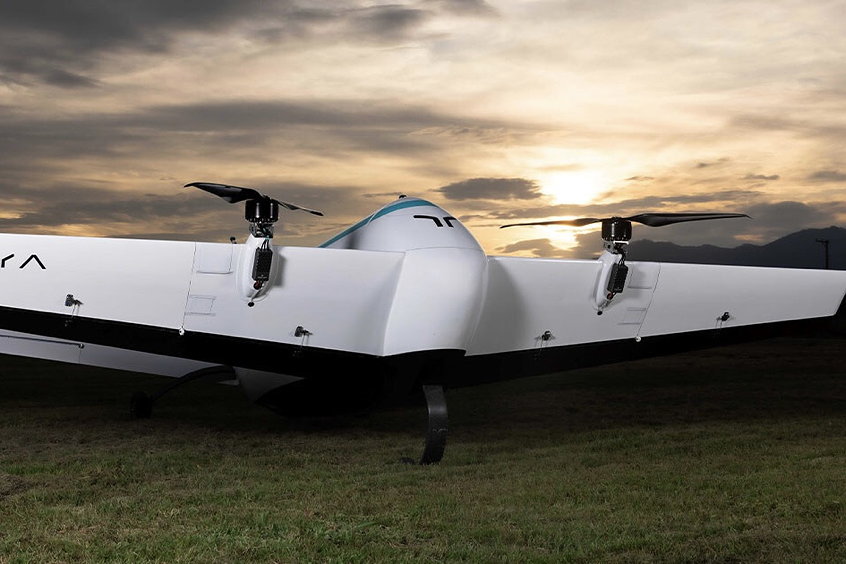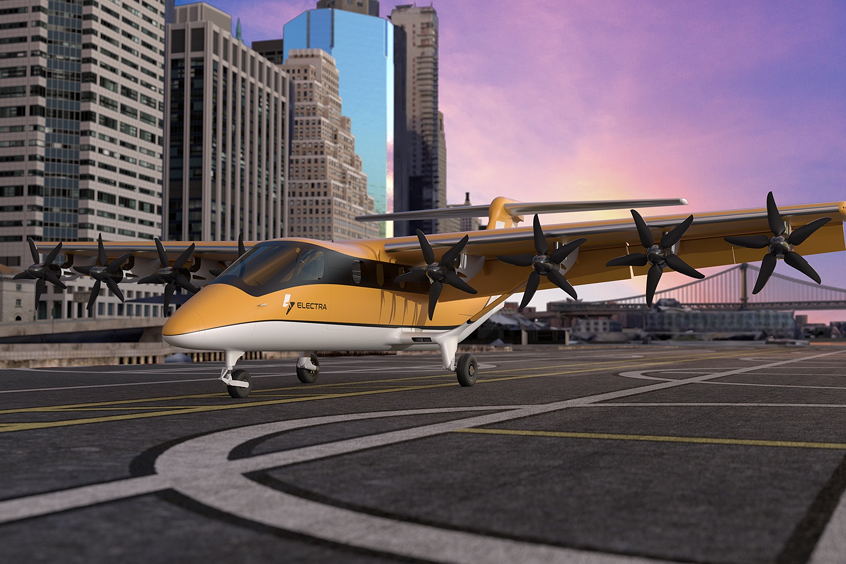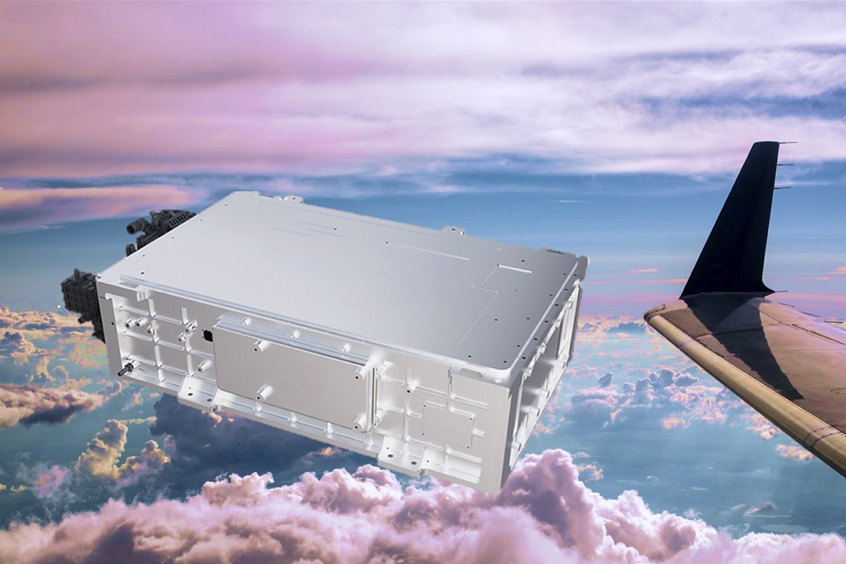Vertical Aerospace, a global aerospace and technology company pioneering zero-emissions aviation, has achieved another significant milestone. Its latest VX4 has completed the first phase of its piloted flight test programme at the Vertical Flight Test Centre.
During Phase 1, the VX4 prototype conducted multiple piloted tethered flights and ground runs, across 20 piloted test sorties, completing a total of 70 individual test points. Together, these tests simulated various aspects of flight and operational situations needed to validate the prototype’s safety in real-world flight scenarios, including those outside of its expected operating conditions. By intentionally testing the aircraft's ability to handle failures, Vertical demonstrated the underlying safety of its design.
One of the most important tests successfully carried out included simulating the failure of one Electric Propulsion Unit (EPU) – inoperative testing – while in piloted tethered flight, to ensure the aircraft responds correctly and continues to be safe while in flight conditions.
These tests have enabled Vertical engineers to collect and measure 35,000 flight and system parameters and verify that all systems are operating correctly and safely in different conditions ahead of further expanding the flight test envelope to piloted thrustborne flight.
Alongside Phase 1 testing, Vertical’s engineers also completed more advanced low and high-speed taxi tests, including deliberately failing EPUs at high taxi speeds to confirm controllability and safety. This verified ground handling characteristics throughout the taxi envelope, as well as aerodynamic characteristics for increasing speed, while in a safe, ground test environment.
Vertical is continuing to work closely with the UK Civil Aviation Authority (CAA) on expanding its Permit to Fly as it prepares for Phase 2 of testing which will see the VX4 prototype undergo piloted thrustborne flight tests.
Vertical is currently developing an identical full-scale prototype which will accelerate the VX4’s flight test programme and demonstration capability. The company will take flight test learnings from both prototypes into the design and development of the certified VX4 model.
CEO of Vertical Aerospace, Stuart Simpson, said:
“It took us just one week to go from our first ground test to our chief test pilot flying the VX4, and we have been making outstanding progress since then. We continue to prove the safety and performance of our design and technology, which we believe to be market leading. Completing this first phase of testing is a significant feat for any eVTOL company and shows the strength of our aircraft, team, and our partners as we progress through our flight test programme and head towards our goal of creating a better way to travel.”
Phase 1 of testing included:
- Piloted tethered flight: performed using closed loop flight control to ensure the aircraft's stability and safety in a controlled environment. Also included simulated failure testing to validate one EPU deliberately failing and assessing automatic aircraft response to bring other engines to maximum power output while in tethered flight.
- Ground vibration testing (GVT): Working with specialists from world leading ATA Engineering – who performed GVT testing on the $10 billion James Webb telescope - eight heavy duty shakers were installed on the VX4 while it was suspended in the air to stress test the aircraft in different situations when flying, such as turbulence. 350 accelerometers - devices that measure the aircraft’s movements and vibrations during testing - were installed on the inside and outside of the aircraft to collect the data.
- Powertrain testing: Understanding how the powertrain is operating and evaluating all the components that generate and deliver power to the propellors. This includes a High Voltage (HV) ripple test to measure and analyse voltage fluctuations (ripple) generated on the powertrain and ensuring the battery can handle it, even at low charge, while providing a stable power supply. This is carried out while the aircraft is tethered in hover.
- Dynamic testing: Ensuring all systems are functioning correctly before they are put into use in flight in real-life conditions – such as powering up, checking the parts are installed and connected correctly and the systems and components work.
Propellor testing: Propeller balancing and spinning tests to measure weight distribution of each propeller blade to ensure vibrations are minimised for smooth, stable flying.
- Taxi testing: VX4 is piloted at low and high speeds on the ground to test the aircraft can move forwards and backwards effectively, testing brake performance and direction of control using differential thrust.
Piloted flight test programme explainer:
- Phase 1: Tethered: the VX4 will perform stabilised hover while loosely tethered to the ground - COMPLETE
- Phase 2: Thrustborne: the VX4 will take-off and land vertically and conduct low speed flight manoeuvres with lift generated by the propellers.
- Phase 3: Wingborne: the VX4 will take-off, fly and land like a conventional aircraft, with lift generated by the wing.
- Phase 4: Transition: The VX4 will transition between thrustborne and wingborne flight, and vice versa.
New VX4 Prototype
This next-generation VX4 is more powerful than the previous full-scale prototype, with an impressive 20% increase in the power to weight ratio, enabling the aircraft to reach speeds of up to 150mph – the certification aircraft’s intended cruise speed.
The aircraft has been designed and built alongside global aerospace partners, including GKN Aerospace, Honeywell, Hanwha, Molicel, Leonardo and Syensqo. It features Vertical’s next generation propellers and new proprietary battery technology, capable of delivering 1.4 MW of peak power and which has been designed and built at the state-of-the-art Vertical Energy Centre near Bristol, the UK’s most advanced aerospace battery facility.
| Contact details from our directory: | |
| Vertical Aerospace Ltd | Airframer |
| ATA Engineering Products Ltd | Pneumatic Tools, Portable Tools, Riveting Tools, Fastening Tools, Cutting & Machining Oil |
| E-One Moli Energy Corp., Molicel | Lithium-ion Batteries |
| GKN Aerospace | Composite Structures, Helicopter Assemblies, Aircraft Structural Components, Aircraft Doors, Wings, Empennages, Helicopter Landing Gear, Electrical Wire & Cable, Nacelles, Engine Nozzles, Engine Housings, Transparent Canopies, Fuel Tanks & Systems, Ice Protection/Prevention Equipment, Engine Parts, Winglets, Flotation Gear, Fuselage Sections, Engine Inlets, Windshields, Refueling Equipment, Air Refuelling Systems, Aircraft Landing Gear, Cable Assemblies, Aircraft Control Surfaces, Aircraft Flooring, Windows, Turbine Engine Blades |
| Honeywell Aerospace | Air Conditioning Equipment, Air Conditioning Equipment, Magnetometers, Cockpit Printers, Airborne Communication Systems, Cooling Systems, Cargo Systems, Airspeed Indicators, WAAS Equipment, Starter Generators, Bleed Air Systems, Air Purification Systems, Flight Management Systems, Engine Parts, Pneumatic Systems Equipment, Automatic Flight Control Systems, Inertial Components & Systems, Multi-Mode Receivers (MMR), Auxiliary Power Units, Cabin Pressure Control Systems, Autopilots, Cockpit Control Systems, Avionics Management Systems, Automatic Direction Finders, Distance Measuring Equipment, Transceivers, VOR (Omnirange) Receivers, Radio Communications Equipment, GPS, Attitude and Heading Reference Systems, Radar/Radio Altimeters, Terrain Awareness and Warning Systems, Horizontal Situation Indicator, Heading Indicators, Onboard Intercom Systems, Electronic Flight Instrument Systems, Flight Recorders, Collision Avoidance Systems/TCAS, Fly-by-Wire Systems, Air Data Computers, Cabin Management Systems, Weather Mapping Radar, Emergency Locator Transmitters, Radar Transponders, IFF Interrogators, Glide Slope Receivers, Weapons Countermeasures, LCD Displays, Moving Maps, Enhanced Vision Systems (EVS), Inflight Entertainment, Angle of Attack Indicators, Proximity Sensors, Testing Services, Environmental Testing Services, Electromagnetic Test Services, Electric Power Controllers, Cockpit Video Displays, Fibre Optic Gyroscopes, Fuel Tanks & Systems, Precoolers |
| Hanwha Group | Hydraulic Actuators, Fuel Tanks & Systems, Fuel Quantity Indicators, Fuel Pumps, Accumulators, Rotor Hub Assemblies, Hydraulic Systems & Equipment, Helicopter Landing Gear, Reservoirs, Hydraulic Pumps, Linear Actuators, Flow Control Valves, Surveillance/Air Defense Radar, Turbine Seals, Electromechanical Actuators |
| Leonardo S.p.A. | Fuselage Sections, Composite Structures |
| Syensqo (was Solvay) | Carbon-reinforced Composites, Silicone Sealants, Thermoplastics, Ablative Materials, Metal Bonding, Cutting Equipment, Adhesives, Composite Adhesive, Epoxy Adhesive, Resins, Epoxy Resins, Potting Compounds, Fibres, Self-Adhering Films, Prepreg, Composite Manufacturing Services, Battery Holders, Polymer Composites, Lightning Protection Systems |
| Related aircraft programs: |
| Vertical Aerospace VX4 |
Weekly news by email:
See the latest Bulletin, and sign up free‑of‑charge for future editions.

Altair collaborates with aerospace startup Moya Aero to develop eVTOLs

Electra reveals design for EL9 hybrid-electric aircraft
Piper Aircraft achieves AS9100 certification
